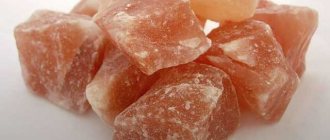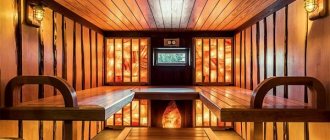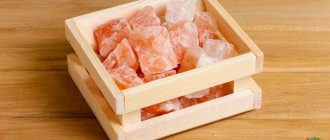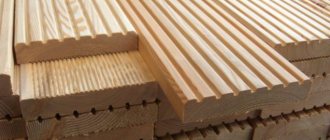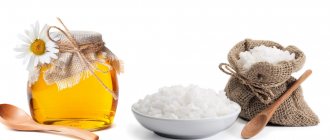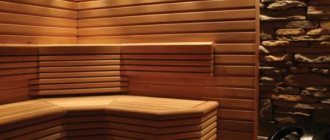The bathhouse is a favorite place to relax, where you can not only spend your leisure time, take a steam bath, but also improve your body’s health. It is not without reason that only natural materials are used for its finishing. Tiles made of Himalayan salt are often used as facing products for steam rooms. This rock, when heated, is able to disinfect the environment and have a beneficial effect on many important systems of human life. Himalayan bath salt can be used as a coating for walls, ceilings and floor surfaces.
Himalayan bath salt
What is Himalayan salt
Himalayan pink salt is the same common table salt that is on any kitchen counter, poured into a salt shaker. Its characteristic color is given by its rich mineral composition.
The fact is that NaCl is extracted in several ways:
- Sea water evaporates, leaving behind only salt. If this process is natural, then it is called self-settling, but it happens that the saline solution is evaporated in special reservoirs, that is, the natural process is repeated.
- Boiling or evaporating salty lake water.
- Mining in deep mines, caves and quarries.
At the same time, the salt contains foreign impurities in small quantities, mainly various microelements. The purer the salt from these inclusions, the more processing it has undergone. Himalayan pink salt is mined by hand in the mines of Pakistan, there is no processing at all, which is why it is so highly valued. Due to the peculiarities of its formation and extraction, such salt is usually called rock salt or halite. It is noteworthy that from the mine to the Himalayas themselves are about 300 km in a straight line.
Loading pink salt Source www.tabnakkohkiluye.ir
There are other, “colored” varieties of table salt: black, pink, red, blue and even purple. However, Himalayan pink is the most famous among them due to its mineral composition. Its composition includes iron (it turns salt pink), manganese, magnesium, fluorine and many other components - about 80 items in total.
Varieties of mineral
A similar mineral is mined in special caves and comes in 3 types:
- Black;
- Pink;
- Orange with a reddish tint.
The most popular is pink salt. The main countries for mineral extraction are Kyrgyzstan, Poland, Ukraine, Pakistan.
The largest deposit was discovered in Pakistan, which was named after the great commander Alexander the Great. Extraction is carried out exclusively by hand without the use of special equipment that can damage the fragile structure of the mineral.
Application
Pink salt can be used in exactly the same way as regular salt - as an additive to food or as a decoration. There is various information about its beneficial qualities, but they are not proven from a scientific point of view. In addition, increased salt consumption for the purpose of health improvement can have the opposite effect and lead to the development of diseases of the cardiovascular system, stomach and even cancer. In addition, salt retains fluid in the body, which can cause swelling.
The maximum healing effect that can be obtained from visiting a bath with Himalayan pink salt is akin to that achieved from being in the so-called salt caves.
A typical salt cave in which people can spend some time breathing salt solution sprayed into the air. Such caves are recommended for frequent colds. Source vsepeshery.rf
Be that as it may, it should be remembered that the daily need of the human body for sodium chloride in any form is no more than 5 grams (slightly less than one teaspoon).
Pink Himalayan salt is used in cosmetology and cooking. The fact is that slabs made from such salt can withstand significant temperatures - up to 200 0C - thanks to which they can be heated and then used as a regular stove.
People most often try to use bath salt in briquettes when decorating rooms, in particular, saunas and steam rooms.
Kinds
Salt briquettes can have a varied composition. Today, in addition to salt, some manufacturers may add flavorings, herbs and oils to them. Flavors do not have to be artificial.
Briquettes with sea salt will allow you to relax and feel like you are on the seashore, and if they contain useful citrus extracts, then the relaxing effect will be doubly pleasing. For a bath it is especially important to choose options with lemon and orange. Briquettes with the Himalayan mineral are considered the most useful, because this salt is distinguished by its purity, and the concentration of useful microelements in it is simply off scale.
There are also interesting salt briquettes with medicinal herbs, including chamomile, sage, calendula, nettle, mint, Altai herbs, lavender, as well as briquettes with natural coffee, fir cones and eucalyptus. Depending on the type of salt and the additional composition of oils and herbs in it, it can have relaxing, tonic and immune-strengthening properties.
We also recommend paying attention to briquettes with Crimean pink salt, which has long been famous for its healing qualities.
How to use Himalayan salt in a bath
There are several different ways to use Himalayan bath salt as decoration, taking advantage of the unusual appearance of this mineral:
- Buy a salt lamp . This is, in fact, a rather original lamp, which is a piece of salt with a light bulb placed inside. If you plug such a lamp into the network, it will shine with a pleasant reddish-yellow light. An excellent solution for baths and saunas, and you can choose a lamp based on the size of the room: the larger the area, the more massive the piece of mineral will be.
The salt lamp is used not only in the steam room, but also in the home Source eos-sauna.ru
See also: Catalog of companies that specialize in baths and decorative forms.
- Buy a small amount of salt by weight and put it in a beautiful decorative bowl, then hang it in the bathhouse. In this form, it will be a wonderful addition to the interior.
- Lay out a partition wall from salt blocks between the bathhouse itself and the dressing room. They are fastened together with special glue or attached to a metal frame.
- You can not limit yourself to just one partition, but cover one or more walls and floor with slabs, lay out intricate paths on it, and decorate the ceiling with salt tiles.
- The most expensive option is to lay the entire wall out of pink bricks and backlight it with lamps. Thus, it is possible to achieve a unique atmosphere, creating an atmosphere of relaxation and tranquility. It turns out that going to the bathhouse cleanses not only the body, but also the thoughts and soul, anxiety is reduced, and depression is alleviated.
The light from the salt wall is very reminiscent of the dawn or sunset shade of the sun, calming and peaceful Source yandex.net
Precautionary measures
Before we begin to describe in more detail how to use Himalayan pink salt in a bath, we should say a few words about in what cases it is best to use it.
Salt's worst enemy is water. Exposure to moisture gradually destroys it; in other words, water will sooner or later completely dissolve all the salt. Since this usually happens from the bottom up, it is possible that the wall will collapse on the heads of the guests.
Therefore, the main rule on how to properly use salt in a bath as a decoration is no moisture. It is best if it is a dry Finnish sauna; a traditional Russian bathhouse is not suitable for these purposes. It is in the sauna that you can achieve the lowest humidity value for this type of room - 55%.
The humidity of a typical Russian bath can reach up to 90%, although it is usually around 70%, so it is not suitable for a salt wall Source www.saunamap.ru
The next point is sufficient ventilation. In order for the moisture to evaporate as quickly as possible, without having time to react with the salt blocks, it is necessary to ventilate the premises well after guests have used the sauna.
Wall of salt
It’s worth saying right away that there are absolutely no restrictions on how much area to cover with halite tiles or blocks - the question depends entirely on the bathhouse owner’s wallet and his creative ambitions. This can be either a small partition or an entire room lined with salt bricks from top to bottom.
Wall lined with bricks made from Himalayan pink salt Source hmsauna.ru
Preparation
The most important rule for starting the installation of a Himalayan salt wall is that the surfaces are completely dry. Therefore, everything is first cleaned of dust, dirt, remnants of building materials and finally wiped with a dry cloth.
The surface of the salt bricks themselves is also cleaned of any dirt and dust with a brush and degreased before applying a layer of glue.
The surfaces to which they are to be attached are cleaned with sandpaper. If it is wood, then choose coarse-grained sandpaper, and if it is glass, then choose fine-grained sandpaper.
To make the most of the decorative component of salt for baths and saunas, you should choose bricks or tiles of different shades. A wall made of such different parts will look most advantageous.
Video description
For little tricks you need to know when using a wall made of Pakistani salt, watch the following video:
Building a wall
A load-bearing structure made of vertical metal profiles is first mounted on the walls, and horizontal gutters are already installed on them. The tile itself is inserted into these grooves like a panel.
Sauna owners most often choose this method of fixing salt stones for a bath; using fastening glue is considered not a completely reliable method.
However, a special glue based on salt itself and caustic magnesite is used to glue the blocks. They are mixed with water in a ratio of 5:3 or 3:2. The resulting glue is used immediately, within 10 minutes, as it dries very quickly.
For those who do not want to prepare glue themselves, two-component dry adhesive mixtures are sold, which are diluted in water and are used up just as quickly.
Two-component glue Source pechihouse.ru
Scrubbing
Salt is perfect for scrubbing. It is especially good in combination with honey, which has a protective, moisturizing, anti-inflammatory, nourishing, rejuvenating and anti-cellulite effect.
Honey sweetness
To prepare a simple but incredibly effective scrub, you need to stock up on:
- medium or coarse salt – 2–4 tbsp. l.;
- homemade honey - ½ tbsp.;
- cinnamon essential oil – 3 drops.
Place all the ingredients in a container, mix and fill a jar or plastic container with the mixture.
We come to the bathhouse, take a steam bath, and whip ourselves with a broom. We leave the steam room and rub the skin with a viscous mass, wait 5 minutes, rinse off. Apply a nourishing mask and cream.
A scrub made from honey and salt fights cellulite and excess weight. It also has softening, exfoliating, cleansing, nourishing, restorative, and protective properties.
Coffee vivacity
To prepare the scrub you will need:
- sea, table or Himalayan salt - 3 tbsp. l.;
- ground coffee – 3 tbsp. l.;
- honey – 3 tbsp. l.
Place all the ingredients in a container, mix and fill the jar with the mixture.
After leaving the steam room, we wipe the body and apply the scrub with light movements. We massage for 3-5 minutes and wash off the mass. Then we cover the skin with a nourishing cream.
This scrub tones, invigorates, calms inflammatory processes, effectively fights “orange peel”, makes the skin soft, soft and smooth.
Oily bliss
To prepare an effective remedy, you need to arm yourself with:
- salt – 3 tbsp. l.;
- honey - 3 tbsp. l.;
- olive oil – 1 tbsp. l.;
- burdock oil - 1 tbsp. l.;
- castor oil – 1 tbsp. l.;
- linseed oil 1 tbsp. l.;
- ginger essential oil – 1 drop;
- cinnamon essential oil – 1 drop.
Place all the ingredients in a container, beat the mixture until creamy, and fill the plastic container.
We apply the substance to the steamed body, rub it with light massage movements, wait 5 minutes and wash it off. Honey with salt and oils is a miraculous remedy that has not only a cosmetic effect, but also a healing one. It won’t be difficult to prepare such simple products, but your body, face and hair will say: “Thank you so much!”
Other uses
Halite blocks can withstand temperatures up to 500 0C, so salt stones for a bath can be used as a protective screen around a hot stove. The blocks accumulate heat from the stove well and thus warm up all the air inside the steam room.
Another side and truly exotic use of Himalayan pink salt is the construction of a working fireplace from it.
Instead of erecting an entire wall, some owners limit themselves to creating small panels of Himalayan halite on the walls, always illuminated from the inside.
Salt stone for a bath can be used like ordinary stove stones, for which small samples of it (cereals, pebbles, small stones) are stacked on the stove itself. After this procedure, the halite is taken out into fresh air and dried in the sun until next time.
Salt on the heater is consumed very quickly, it literally melts before our eyes Source roomester.ru
Briefly about the main thing
Pink Himalayan salt is ordinary table salt that is mined by hand in one of the Pakistani mines. It is used as a seasoning for food, in cosmetology, and as a cooking surface for cooking. Bath salt can be used in a steam room, both when decorating saunas and steam rooms, and to create a “salt” atmosphere inside the sauna. The health-improving effect of using this finishing material is questionable and remains on the conscience of the bathhouse owner himself, but its harmlessness has been absolutely proven.
The walls are tiled with tiles or salt blocks, and backlit with lamps or LEDs. First, a load-bearing profile is constructed, and the blocks are inserted into it like a typesetting panel. You can also limit yourself to simple masonry using homemade or factory-made glue based, in fact, on salt and magnesite itself.
You can also make lamps, panels, sun loungers from Himalayan halite, lay out paths in a bathhouse, and use them as stove stones.
Ratings 0
Use Cases
It is most convenient to use salt in the bath in the form of briquettes or pebbles. They are not destroyed by temperatures. When heated, negatively charged ions are released from them, which disinfect the air in the bathhouse and create a microclimate in it close to the sea.


